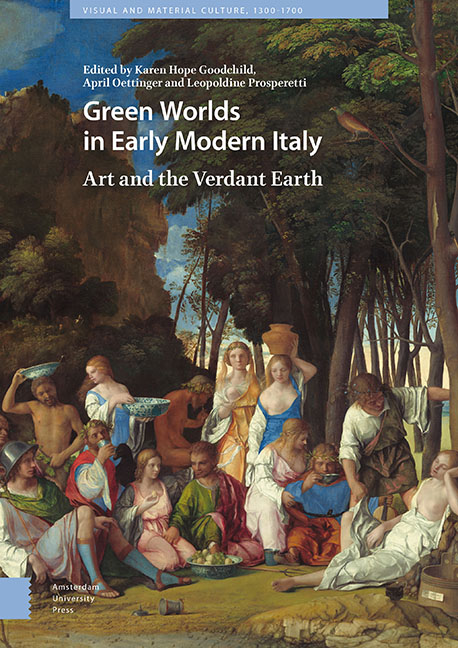Book contents
9 - Of Oak and Elder, Cloud-like Angels, and a Bird's Nest: The Graphic Interpretations of Titian's The Death of St. Peter Martyr by Martino Rota, Giovanni Battista Fontana, Valentin Lefebre, John Baptist Jackson, and their Successors
Published online by Cambridge University Press: 21 November 2020
Summary
Abstract
In this paper, I examine the prints made after Titian's The Death of St. Peter Martyr. Even though the various engravers’ works all differ in design, they share the playful attitude to give life to what was left unsaid or only partially referred to by art critics, and by concentrating on aspects of the painting that had not been elucidated, they fill a lacuna in the sense that they weave in an element to the story that had not been there before. The prints also demonstrate the growing self-confidence of the graphic interpreters. Focussing on the natural world, their works stand out for the excellence of their en detail artistry and craftsmanship on both sides of the threshold between original and interpretative copy.
Keywords: reproductive printmaking, Titian, artistic self-confidence, art theory, Vasari, landscape print
On the night of the 15th and 16th August 1867, a fire in the Chapel of Our Lady of the Rosary in the church of Santi Giovanni e Paolo in Venice destroyed some of the most famous paintings in the city. The flames not only consumed the ceiling of the Cappella del Rosario, with its panels by Tintoretto, Palma il Giovane and Francesco Bassano, but also – in an even more tragic turn of events – two large altarpieces, Giovanni Bellini’s Madonna and Saints and Titian's The Death of St. Peter Martyr, which had been temporally stored at the church, awaiting restoration.
Titian's St. Peter Martyr altarpiece, which was completed for the convent in 1530 and must have measured over five metres in height, is one of the artist's most reproduced works. It was considered a masterpiece from the beginning, praised by both artists and scholars for its groundbreaking treatment of the protagonist's passions within a setting of great pictorial magnificence. Patricia Meilman, in her book Titian and the Altarpiece in Renaissance Venice, recounts the origins of the work, argues its art-historical significance within the tradition of history painting, and examines it within the context of contemporary art theory. What was so revolutionary about Titian's painting was its staging of a martyr's death in a forest with not a building in sight. The Death of St. Peter Martyr was not just a great feat of religious art. It was a great sylvan masterpiece.
- Type
- Chapter
- Information
- Green Worlds in Early Modern ItalyArt and the Verdant Earth, pp. 197 - 216Publisher: Amsterdam University PressPrint publication year: 2019

